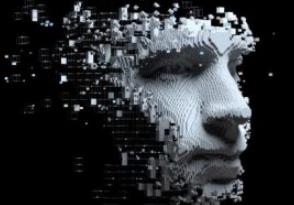Incest AI: Navigating the Ethical Minefield
Unpacking the Controversy: What Is Incest AI? Incest AI refers to artificial intelligence applications that simulate or analyze themes related to familial or close-kin relationships in ways that may include or suggest incestuous dynamics. This technology is currently emerging in fields ranging from literary analysis to therapeutic scenarios. The development and use of such technology are fraught with ethical concerns due to the sensitive nature of the topic it addresses.

The Role of Incest AI in Research and Education Scholars in psychology and cultural studies have explored the potential use of incest AI to better understand historical contexts and familial dynamics in literature. For instance, incestuous themes in classical literature, such as in Greek mythology or historical monarchies, can be analyzed through AI to provide insights into the societal norms and psychological underpinnings of past eras. Researchers can use incest AI to process large volumes of texts, identifying patterns and themes that might not be evident through traditional methods.
Therapeutic Applications: A Double-Edged Sword In therapy, incest AI might be used to help individuals process traumatic experiences or explore complex family relationships in a controlled environment. Therapists could use simulations to help clients understand their feelings and reactions within a safe, virtual space. However, the use of incest AI in therapy raises significant ethical questions about re-traumatization and the boundaries of artificial therapeutic environments.
Ethical Concerns and Legal Boundaries The primary ethical challenge with incest AI is ensuring that its application does not normalize or trivialize the gravity of incestuous abuse. Legal experts and ethicists are deeply concerned about how these technologies might be misused in ways that could harm individuals or society. For instance, creating or distributing any content that seems to endorse or promote incestuous activities could have legal ramifications in many jurisdictions, adding a layer of complexity to the development and deployment of such technologies.
Ensuring Ethical Compliance Developers of incest AI must navigate a tightrope of ensuring that their technology is used for legitimate educational or therapeutic purposes without crossing into unethical territory. This involves rigorous ethical review processes, clear guidelines for use, and potentially, technology that is designed to prevent misuse. Transparency with users about the intentions and limitations of the AI, as well as securing informed consent, are crucial steps in deploying these technologies responsibly.
Public and Professional Reactions The public and professional response to incest AI is polarized. Some see it as a valuable tool for education and therapy, while others view its potential risks as too great. Engaging with diverse stakeholders, including ethicists, survivors of abuse, psychologists, and the general public, is essential for gauging the broader implications of such technology.
Looking Ahead: The Future of Incest AI As we advance technologically, the capabilities of incest AI will likely become more sophisticated. This progress demands an ongoing, rigorous evaluation of both the potential benefits and risks. Ensuring that ethical safeguards keep pace with technological development is essential for the responsible use of incest AI.
For those interested in exploring the boundaries of what AI can teach us about complex and sensitive human relationships, incest AI offers a challenging frontier. Learn more about the ethical landscape of this technology by visiting the incest AI details.
In conclusion, navigating the ethical minefield of incest AI requires careful consideration, stringent ethical standards, and a commitment to prioritizing human welfare above technological innovation. As we continue to explore this contentious field, transparency, and dialogue will be key to harnessing the potential of incest AI in a morally acceptable way.